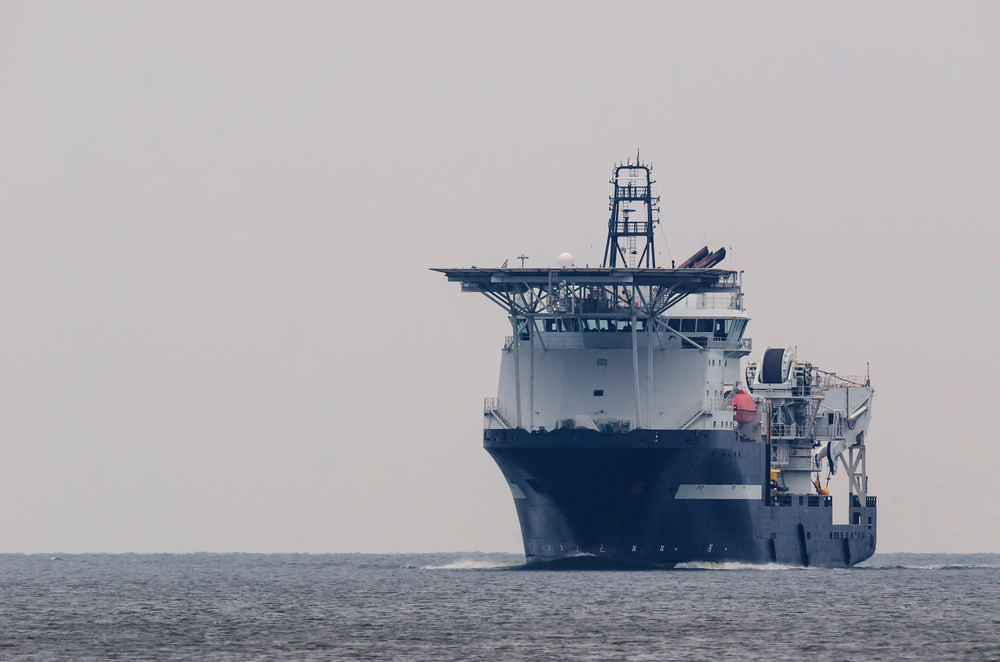Sarah McLean
,
Lead Content Manager
Author
, Published on
September 19, 2025
No items found.

Using a multi-layered approach, Spinergie’s Project Tracking dashboard removes the pain of consolidating data and managing offshore wind farm construction.
.webp)
Tracking data across a wind farm project can be a headache for teams using multiple sources, and the process becomes even more complex when monitoring the progress of many wind farms. Traditionally, most teams use external data visualization and consolidation tools, which are time-consuming to connect, build, and maintain. Reliance on out-of-app reports and tools also significantly complicates workflows.
Spinergie offers the opportunity to access all project data in a single place, removing much of that strain from your team and, in turn, making internal communications and reporting easier. Spinergie provides and maintains the Project Tracking dashboard, freeing your team time. As with all Spinergie data, the dashboard is directly linked to manual reporting backed by robust QC or sensor data onboard vessels to ensure accuracy.
Project Tracking offers four distinct levels, from a broad overview of all ongoing projects to the granular detail within individual Points of Interest (POIs); users can navigate between each level to access required data within a single source of truth.
At a glance, the solution offers:
Here, we dive deeper into the four layers that combine to empower wind farm operators to make informed decisions and optimize resource allocation to achieve their installation goals on time and within budget.
The first level of the Project Tracking dashboard presents customized metrics specified by the client across multiple projects/wind farms. While metrics will differ on a case-by-case basis depending on each user's specific needs, a key example for wind farm operations would be to split the metrics into four categories: Installation Performance, Time Distribution, Vessel Efficiency, and Daily Reporting.

Installation Performance metrics show Key Performance Indicators (KPIs), such as the number of foundations and turbines installed and the length of cable installed to date. Time Distribution shows how many days have been spent on each project and how much time has been affected by waiting on weather or other adverse events. This means stakeholders can see at a glance where the most downtime has occurred and the main reason for it.
Vessel Efficiency will show each project's average daily fuel consumption and CO2 emissions at a project level, which will become especially important when compiling ESG reports.
Users can access each project in the second level, accessible from level one, by clicking on the project name. Various modules are presented here, including an installation overview linked to the live map and a schedule linked to reported and AIS vessel activities.
Beyond live tracking, users are presented with another set of customized KPIs specific to the project. Selected KPIs could include metrics such as the number of foundations or turbines installed, the length of cabling, and the time taken at each phase.
Spinergie users will be familiar with the intuitive S-Curve chart, which is also available at a project level to show how each phase of an installation campaign is progressing compared to the planned objectives.

Additional analysis focuses on vessel activity and installation performance. Vessel activity highlights vessel days over time at the project and allows users to understand how much time is spent per activity (at turbine, in transit, ashore, etc.). Performance analysis digs deeper into how much time is spent at each POI on the foundation, turbine, and cable installation campaigns. At this stage, there is an opportunity to access an operational learning curve to understand if the time spent per POI is improving and, if not, discover which elements provide a barrier to improvement.
Each phase has its own page within the third level of the dashboard: foundations, turbines, and cables. This level has a recognizable format from the project level, making it easy to follow and understand. Once again, the map and schedule are at the top of the screen for a visual overview of the activity on site. Additional KPIs are once again customized and specified for the project. For instance, for foundations, this may show average installation times for each component or the whole scope and the net time taken to install foundations to date. A phase-specific S-Curve chart shows real-time installation compared to target times, which can be presented in multiple scenarios if desired.

Once again, there is additional performance analysis per POI, this time broken down by activity (operations, weather standby, or adverse events) to understand the time impact for each. Further statistics identified by the client are populated in the final chart to provide an understanding of what elements have taken up the most time. For foundations, it is possible to view statistics such as seabed compaction or grouting preparation, injection, and curing.
At the final level, which focuses on specific POIs, users can explore the root causes of installation delays at that turbine. For example, within the Reported Activities module within the Fact Page of a turbine, every aspect of the installation campaign is recorded and held within a searchable database.
Users can search for contractor downtime within the database, and all daily reports pertaining to it will be displayed. From here, the link to the report will answer any questions surrounding the causes of each instance of downtime.

Spinergie's Project Tracking dashboard provides a comprehensive and transparent view of installation progress across all project phases. This enhanced visibility brings multiple advantages, including:


Analysis of the subsea vessel fleet including its resurgence of interest and expectations for the future.
.jpg)
Maersk’s Sturgeon WTIV was set to be a pioneering Jones Act-compliant vessel for the US offshore wind market. Yet, with the domestic market faltering under the new administration the project was terminated just before delivery. Is this a sign of the wind market replicating the offshore rig glut of the mid-2010s? Spinergie’s Lead Analyst, Yvan Gelbart, presents his analysis.